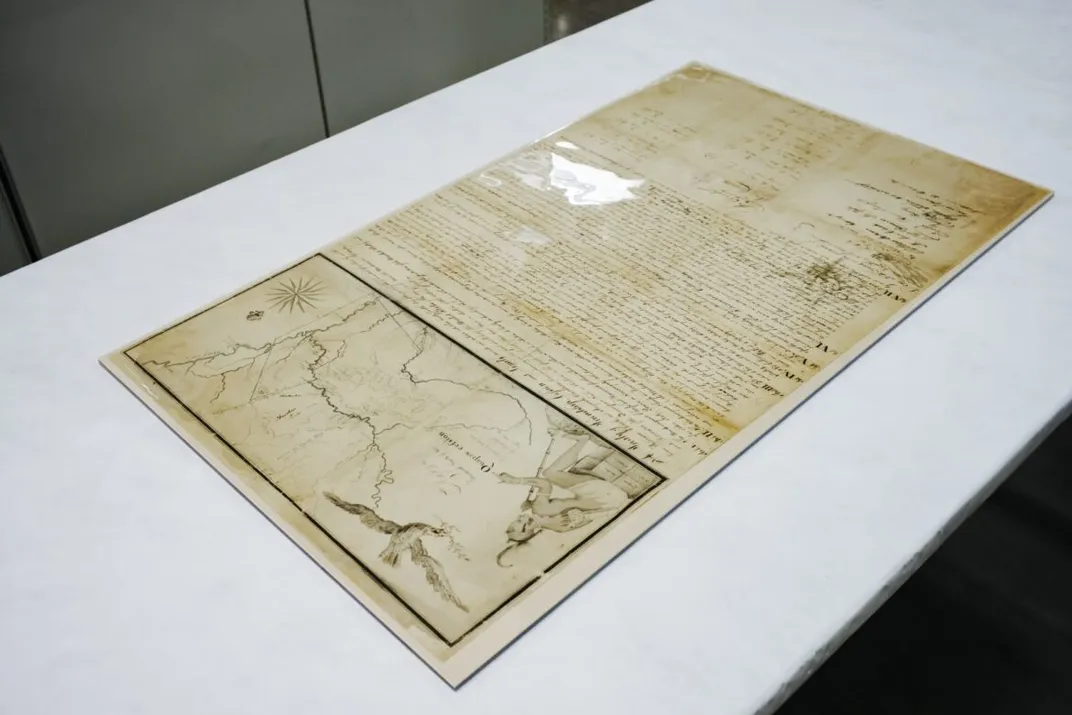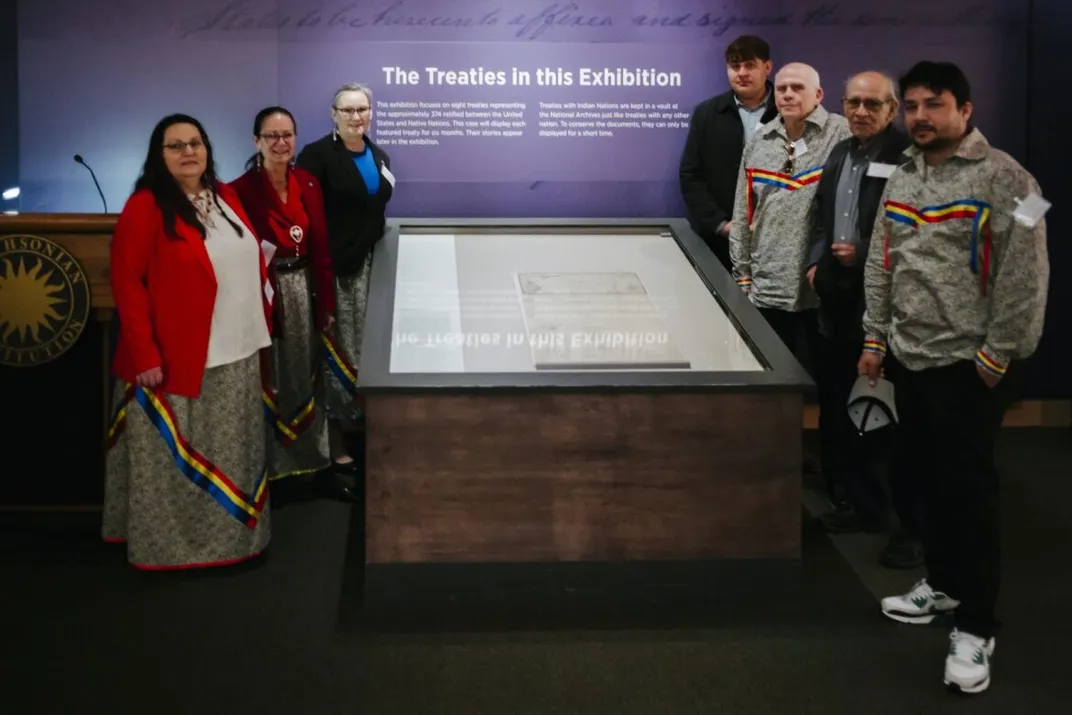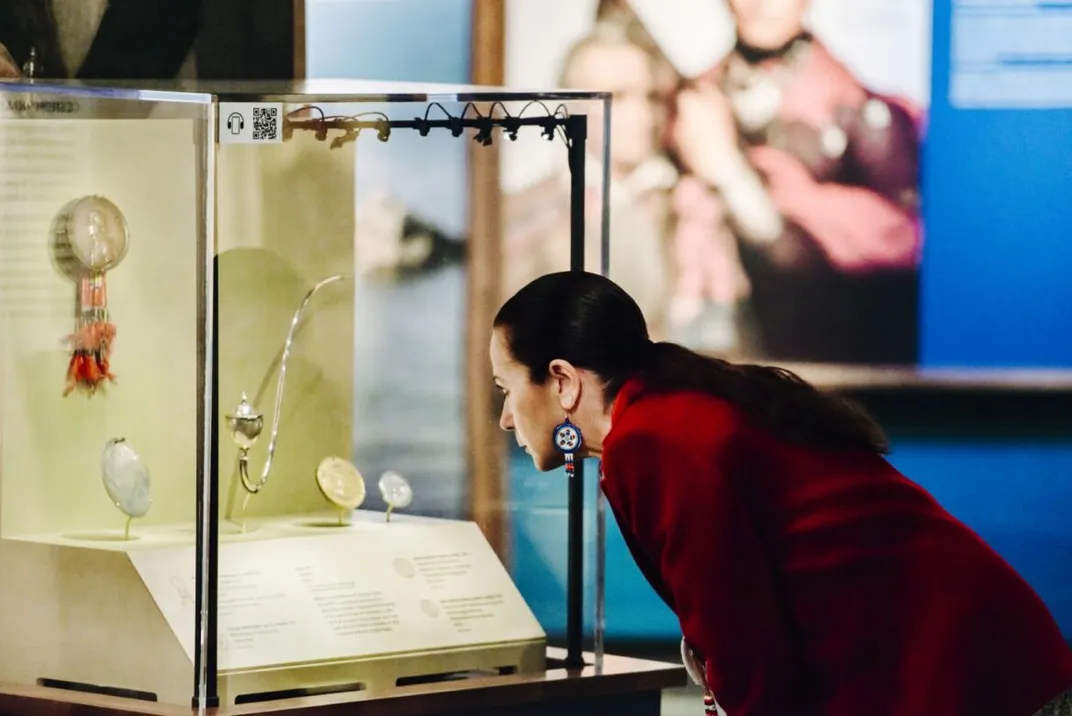NATIONAL MUSEUM OF THE AMERICAN INDIAN
The Quapaw Treaty Was Honored for Only Six Years Before the United States Broke It
The document signed in 1818 serves as a reminder of the unfairness of the federal government’s approach to negotiating with Native communities
:focal(350x248:351x249)/https://tf-cmsv2-smithsonianmag-media.s3.amazonaws.com/filer_public/b8/82/b8823732-c3fe-4f74-a516-466fdf388ac4/quapaw_2.jpg)
The Quapaw refer to themselves as “Ug’ akh pa” or Downstream People. Their oral history of migration began by the Atlantic Ocean along with the Osage, Kanza (Kaw), Ponca, and Omaha tribes, who speak the similar Dhegihan Siouan language. By the 1500s, Quapaw oral tradition recounts they had migrated to what is now the Ohio River Valley. On their continued migration south and west, the Quapaw settled on approximately three million acres in what are now the states of Arkansas, Oklahoma and Louisiana.
In 1541, the Quapaw were encountered by Spanish explorer Hernando de Soto’s expedition, with no further contact with Europeans until 1673, when French explorers Jacques Marquette and Louis Joliet encountered the Quapaw living in five villages near what are now the Mississippi and Arkansas Rivers. Population estimates in the late 17th and 18th century ranged from 3,500 to 7,500. In 1698 a smallpox epidemic decimated the Quapaw, leaving approximately 800 to 1,200 alive. In 1803, the Quapaw population further dwindled to approximately 555 living in three villages located south of the Arkansas River when their territory was sold by the France to the United States in the Louisiana Purchase. In this transaction, many tribes were never informed that their homelands were now a part of the emerging United States.

The U.S. negotiated the Quapaw Treaty of 1818, during a time when the Quapaw were living in three villages near what is now Pine Bluff, Arkansas. The U.S. wished to acquire rights to their land to be used for the future settlement of eastern tribes forced to move from their homelands. In the treaty, the Quapaw agreed to a reservation of one million acres running northeast to southwest between the Arkansas and Ouachita rivers, relinquishing their claims to 30 million acres south of the Arkansas River.
The 1818 treaty did not last long. United States negotiators returned six years later in 1824, at the urging of white settlers who desired the prime agricultural land on the lower Arkansas River. In turn, the Quapaw were forced to abandon their 1818 reservation that was negotiated in good faith and move farther west where a new reservation was established in 1839 in Indian Territory, which is now northeast Oklahoma. Today, the town of Quapaw, Oklahoma, serves as the tribal capital of the Quapaw Nation and is no longer a reservation but has a 13,000-acre tribal jurisdictional area.
Last month, leaders of the Quapaw tribe travelled to the National Museum of the American Indian for the unveiling of the 1818 treaty signed by their ancestors. They were met by Cynthia Chavez Lamar (San Felipe Pueblo, Hopi, Tewa and Diné), director of the National Museum of the American Indian, and William (Jay) Bosanko, deputy archivist of the United States. A private viewing of their treaty took place in the museum’s collections as Quapaw tribal officials saw their ancestor’s signatures, which signed away millions of acres to ensure their continued existence. The unveiling of the treaty took place on the fourth level gallery of the museum, starting with opening remarks by museum director Cynthia Chavez Lamar, followed by remarks by deputy archivist Jay Bosanko of the National Archives and ending with words from Quapaw tribal chair Wena Supernaw.
“This 1818 Treaty comes with so many emotions. Our ancestors, they signed it for us so we could survive as a people. Had they not done it, we would have met certain annihilation,” said Supernaw. In her closing statement, she proclaimed, “We’re still here y'all, and we’re not going anywhere.”

The 1818 Treaty of the Quapaw is the 19th treaty to be installed in the NMAI’s Nation to Nation treaty exhibit and will be on view until this October. You can read a transcript of the treaty here .

